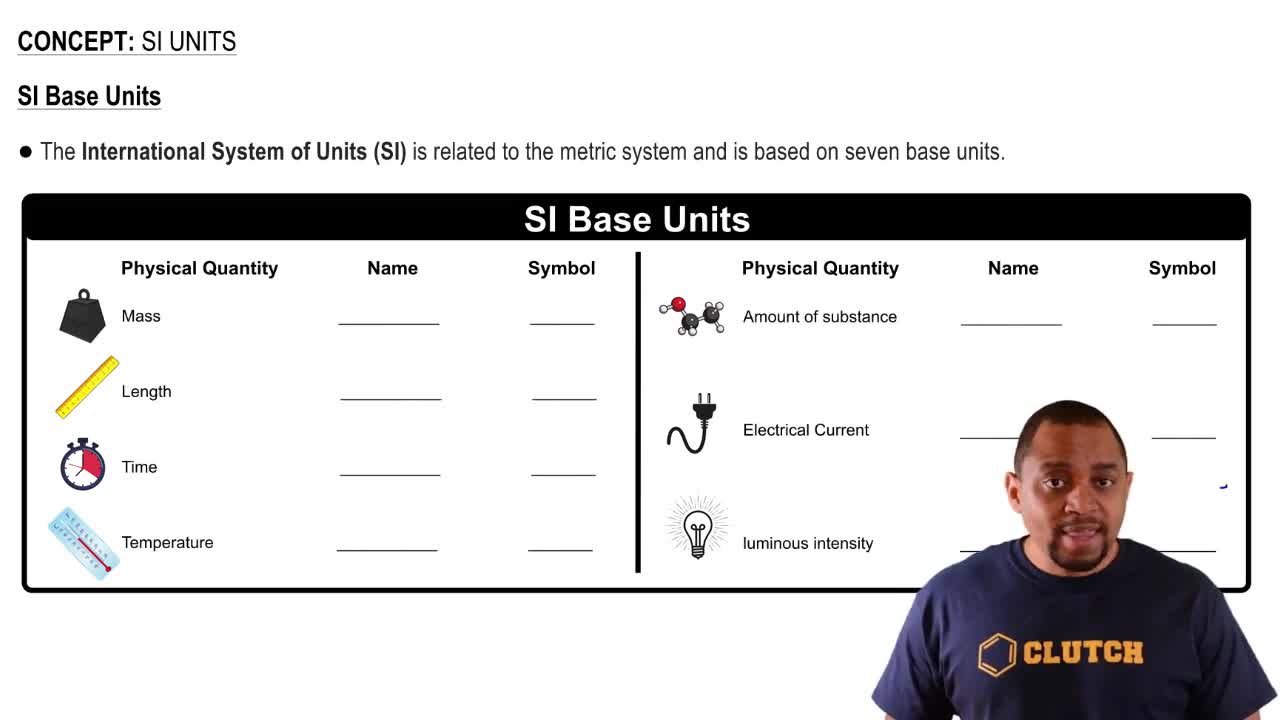Based on the following reaction profile, how many intermediates are formed in the reaction A⟶C? How many transition states are there? Which step, A⟶B or B⟶C, is the faster? For the reaction A⟶C, is Δ𝐸 positive, negative, or zero? [Section 14.5]
Ch.14 - Chemical Kinetics
Chapter 14, Problem 18a
(a) What are the units usually used to express the rates of reactions occurring in solution?
 Verified step by step guidance
Verified step by step guidance1
Identify the type of reaction: Since the question specifies reactions occurring in solution, we are dealing with reactions where reactants are dissolved in a solvent.
Understand the concept of reaction rate: Reaction rate refers to the speed at which reactants are converted into products. It is a measure of the change in concentration of reactants or products per unit time.
Recognize common units of concentration: In solutions, concentration is typically expressed in moles per liter (Molarity, M).
Determine the appropriate unit for time: Time is generally measured in seconds (s) in the context of reaction rates.
Combine the units of concentration and time: The rate of a reaction in solution is usually expressed in terms of a change in concentration over a change in time, leading to units of Molarity per second (M/s).

Verified video answer for a similar problem:
This video solution was recommended by our tutors as helpful for the problem above.
Video duration:
2mWas this helpful?
Key Concepts
Here are the essential concepts you must grasp in order to answer the question correctly.
Reaction Rate
The reaction rate is a measure of how quickly reactants are converted into products in a chemical reaction. It is typically expressed as the change in concentration of a reactant or product per unit time, allowing chemists to quantify the speed of the reaction under specific conditions.
Recommended video:
Guided course

Average Rate of Reaction
Concentration Units
Concentration is a key factor in determining reaction rates and is commonly expressed in units such as molarity (M), which is moles of solute per liter of solution. Understanding these units is essential for calculating how changes in concentration affect the rate of a reaction.
Recommended video:
Guided course

SI Units
Time Units
Time is another critical component in expressing reaction rates, typically measured in seconds (s), minutes (min), or hours (h). The choice of time unit can influence the interpretation of the reaction rate, especially in fast or slow reactions, making it important to maintain consistency in units when comparing rates.
Recommended video:
Guided course

SI Units
Related Practice
Textbook Question
Textbook Question
(b) Name three factors that can affect the rate of a chemical reaction.
Textbook Question
b. As the temperature increases, does the reaction rate usually increase or decrease?
Textbook Question
(c) As a reaction proceeds, does the instantaneous reaction rate increase or decrease?
Textbook Question
Consider the following hypothetical aqueous reaction: A(aq) → B(aq). A flask is charged with 0.065 mol of A in a total volume of 100.0 mL. The following data are collected: Time (min) 0 10 20 30 40 Moles of A 0.065 0.051 0.042 0.036 0.031 (a) Calculate the number of moles of B at each time in the table, assuming that there are no molecules of B at time zero and that A cleanly converts to B with no intermediates.
1
views
